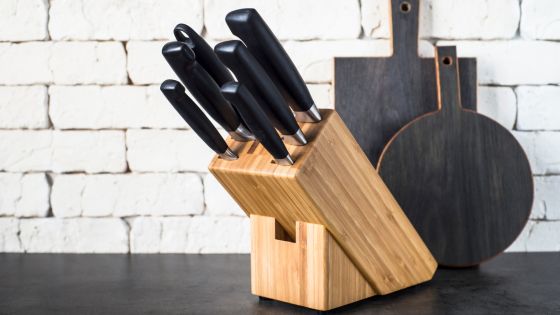A kitchen knife is an essential tool in every cook’s arsenal. Whether you’re a professional chef or a home cook, having the right kitchen cutlery for the task at hand can make a difference in your cooking experience. With many options available in the market, it’s important to understand the different types of kitchen knives and their specific uses. This article will explore the importance of selecting the right blade for the right task and guide you in choosing the perfect kitchen blade for your culinary needs.
The Chef’s Knife: A Versatile Workhorse
The chef’s knife is the most essential tool in any kitchen. With a broad and curved blade ranging from 6 to 12 inches, it is designed to perform various tasks. A chef’s knife can handle everything from chopping vegetables and mincing herbs to slicing meat and disjointing poultry. Look for a chef’s knife with a comfortable handle and a well-balanced blade for effortless cutting and precise control.
The Paring Knife: Small but Mighty
When it comes to intricate tasks that require precision, paring cutlery is your go-to tool. With a blade length of 3 to 4 inches, this small blade is perfect for peeling, trimming, and slicing small fruits and vegetables. Its compact size allows maximum control and maneuverability, making it ideal for delicate tasks such as deveining shrimp or removing seeds from chillies.
The Bread Slicer: Slicing Through the Crust
A bread slicer is a must-have in your kitchen if you frequently enjoy fresh-baked bread or crusty loaves. With a long, serrated blade typically around 8 to 10 inches, this is designed to slice through crusty bread without crushing or tearing it effortlessly. Look for bread cutlery with a sharp serrated edge and a comfortable handle to make slicing through loaves a breeze.
The Santoku Knife: Embracing Japanese Precision
Originating from Japan, the Santoku knife has gained popularity worldwide for its versatility and precision. With a shorter and wider blade than a chef’s blade, the Santoku is excellent for slicing, dicing, and mincing. Its unique design incorporates hollowed-out grooves on the blade, reducing friction and preventing food from sticking. If you enjoy Asian cuisine or want a versatile alternative to a chef’s blade, a Santoku knife might be the perfect choice.
The Boning Knife: Mastering Meat Preparation
When deboning and trimming meat, a boning blade is indispensable. With a narrow and flexible blade, typically 5 to 7 inches long, this kind of blade allows you to easily maneuver around bones and joints. Whether separating ribs or filleting fish, boning cutlery provides the precision and control required for careful meat preparations.
The Cleaver: Power and Precision
A cleaver is the ultimate tool for tackling tough tasks like cutting through bones or splitting poultry. With a large, heavy blade and robust construction, a cleaver can easily handle heavy-duty cutting tasks. Its broad blade also allows you to effortlessly transfer chopped ingredients from the cutting board to the pot.
Choosing the right kitchen blade can greatly enhance your culinary experience and improve the quality of your cooking. Understanding the different types of knives and their specific uses is crucial in making an informed decision. Whether it’s a versatile chef’s cutlery, a precise paring blade, or a powerful cleaver, each has its unique purpose in the kitchen. Invest in quality bladesthat feel comfortable in your hand, and remember to keep them sharp for optimal performance. With the right blade for the right task, you’ll be well-equipped to handle any culinary challenge that comes your way.




















